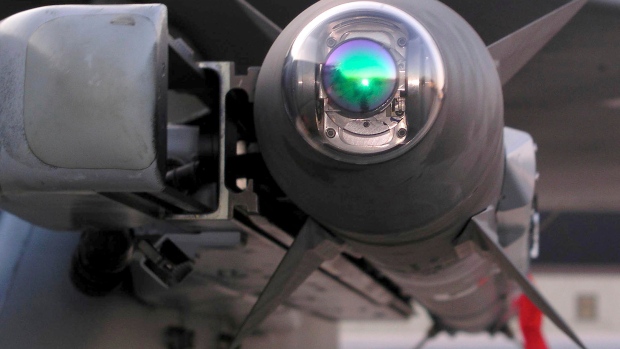Feb 13, 2023
These are the US$439,000 missiles the U.S. is using to shoot down mystery UFOs
, Bloomberg News

As mysteries continue to swirl around the balloon and three other so-far-unidentified objects shot down by the U.S. in recent days, one thing at least has been clear: the weaponry used to knock them out of the sky. Be it the original alleged Chinese surveillance balloon downed off South Carolina, or the as-yet-unknown objects targeted over Alaska, Michigan and Canada, all have met their demise by the same type of missile — the AIM-9X Sidewinder.
Here’s what you need to know about it:
Who makes and uses them?
Raytheon Technologies Corp. produces the missile, which comes from a broader class of weaponry that has been in the U.S. arsenal for decades. While the weapons are primarily manufactured for U.S. forces, the missile is also sold in large quantities to a range of American allies. Raytheon says that it has 31 foreign military sales partners, with countries including South Korea, the United Arab Emirates and Indonesia all having purchased the missile. Mainly conceived as an air-to-air weapon, the latest AIM-9X version is one that can also be used from the ground and against land-based targets. It is widely deployable in a range of modern aircraft including the F-16 Fighting Falcon and F-22 Raptor aircrafts. This versatility has allowed it break records by helping the advanced F-22 fighter jet score its first air-to-air kill. The US does not disclose the exact number of such missiles in its arsenal, but it’s likely to be significant with the US Air Force receiving its 100,000th such missile in 2021.
How much do they cost?
The U.S. Department of Defense is seeking to procure 255 of the missiles for $111.9 million in the 2023 financial year. That comes out to a cost of US$439,000 each. But there are significant discounts involved and other countries will usually need to pay for associated equipment, parts and training costs as well. Malaysia sought to procure just 20 for an estimated AIM-9X-2 missiles for $52 million in 2011, for example, after including such secondary costs.
How do they work?
The AIM-9X Sidewinder is a heat-seeking, supersonic, short-range missile. Its main components include an infrared homing guidance section, an active optical target detector, a high-explosive warhead and a rocket motor. The infrared in particular allows the missile to hone in on targets in a range of settings at any time of the day. The 186-pound (84 kg) device is powered by solid fuel, and it has a length of 9.9 feet (3 metres). The so-called Block II variant of the missile has enhanced features, including a lock-on-after-launch capability so the pilot shooting the device does not have to rely on just visual aiming.Why are they being used?
Sidewinder missiles have a long history in the U.S. military. They were first developed in the 1950s by the U.S. Navy before being adapted by the U.S. Air Force. It was the first heat-seeking guided missile to become operational. Early variants could only be used at very close range and could not be deployed at night. But subsequent improvements made it an ideal weapon for a variety of situations, and a later version of the missile was used during the Vietnam War. The 9X is the latest iteration of the Sidewinder and began to be deployed in 2003. Still, defence officials acknowledge their use against unidentified flying objects such as balloons is novel. The military concluded that its smaller warhead and its shorter range allowed the AIM-9X to be deployed more safely and effectively compared to other missiles like the AIM-120, General Glen VanHerck, the commander of North American Aerospace Defense Command and U.S. Northern Command, told reporters on Feb. 6.








